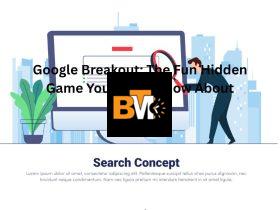Changing jobs is about more than learning new responsibilities and meeting different teams. It also requires a thorough reassessment of your finances to avoid costly oversights. Neglecting to review and coordinate your old and new accounts can leave money and valuable benefits on the table. By planning ahead and following a structured checklist for account transfers, you can make your career transition seamless, cost-effective, and secure. The guide below lays out the key steps you need to take before, during, and after your job switch to protect your savings and optimize your financial future.
Checking Your Old Workplace Accounts
Before you hand in your resignation, take stock of every benefit and account tied to your current employer. Start with retirement plans such as a 401(k) or 403(b) and obtain the latest balance statement. Many workers underestimate the growth potential hidden in these accounts. Next, review any unexercised stock options or restricted stock units, determine vesting schedules and expiration dates, and analyze potential tax consequences if you convert or sell shares. Don’t overlook health savings accounts (HSAs) and flexible spending accounts (FSAs). Depending on your plan rules, you may be able to roll an HSA into an individual account, preserving its triple-tax advantage. Your employer may also hold unclaimed bonuses or payouts for unused vacation days, so request a final payroll statement and confirm that no earnings remain uncollected. Finally, note all deadlines for submitting paperwork or initiating rollovers to ensure you don’t forfeit any remnant benefits when your employment officially ends.
Understanding Your New Employer’s Benefits
Once you’ve accepted a new position, dive into the details of your incoming benefits package. Pinpoint whether the company offers a 401(k) match and the vesting schedule attached to employer contributions. A generous match can equate to an immediate return on your salary that is hard to beat. Compare health insurance options, paying close attention to premiums, deductibles, copays, and provider networks. If you rely on regular medical care, a lower deductible plan may be more economical despite higher monthly costs. Investigate whether your new employer sponsors an HSA, dependent-care FSA, or commuter-benefit program. Some organizations also provide student-loan repayment assistance or tuition reimbursement, so factor those perks into your broader savings strategy. By benchmarking these offerings against your previous benefits, you can make informed decisions about which accounts to consolidate and which to maintain.
Planning Smart Account Transfers
Choosing the right transfer method can preserve tax advantages and reduce fees. In most cases, a direct rollover, where assets move straight from one custodian to another, eliminates mandatory tax withholdings and minimizes paperwork. Avoid the temptation of an indirect rollover unless you are confident you can redeposit the entire distribution within the 60-day window. Failure to meet that deadline transforms the rollover into a taxable distribution and may trigger a 10 percent penalty if you are under age 59½. If you prefer to consolidate multiple 401(k)s or roll funds into an IRA, compare fee schedules, investment options, and service reputations across custodians. For high-income earners looking to optimize tax efficiency, a roth ira conversion could make sense, paying taxes on pre-tax dollars today in exchange for tax-free growth and withdrawals down the line. Consult with a financial professional to determine whether this strategy aligns with your broader retirement goals and projected tax bracket.
Keeping Track of Short-Term Money Needs
A job transition often carries immediate costs such as relocation expenses, professional memberships, new equipment, or even clothing for a different dress code. To avoid dipping into emergency savings, build a short-term budget that covers at least three months of essential expenses including rent or mortgage, utilities, groceries, and insurance premiums. If your new employer’s health coverage does not start immediately, research COBRA or special-enrollment options to prevent gaps in care. Update your emergency fund in tandem with account transfers so that you maintain liquidity without sacrificing long-term investments. Setting aside a small transition cushion can dramatically reduce stress and help you focus on performing well in your new role rather than worrying about unexpected bills.
Getting Professional Guidance
Even experienced savers can benefit from second opinions when navigating complex rollover rules and tax implications. A fee-only financial planner or a certified public accountant familiar with retirement-account regulations can help you map out a personalized transfer strategy. Look for advisors who operate under a fiduciary standard, meaning they are legally obligated to act in your best interest. Before committing, request a clear breakdown of fees, services, and success metrics. An expert can also coordinate any Roth conversions, debt-management strategies, or insurance adjustments that accompany your job change. Their insight ensures you avoid common pitfalls such as under-withholding on taxable distributions and gives you confidence that your financial checklist is complete.
Taking Control of Your Income and Savings
After you start your new job, review your first few paychecks to confirm that deductions for retirement, health insurance, and other benefits match your elections. Updating your W-4 form may be necessary to adjust federal withholding based on your new salary and tax status. If your new 401(k) match is less generous than before, consider increasing IRA contributions to maintain your overall retirement-savings rate. Automated savings tools can simplify this process by diverting a fixed percentage of your paycheck into various accounts. Use online dashboards or mobile apps to monitor account balances, fees, and performance in real time. By staying proactive about tracking inflows and outflows, you’ll maintain control of your financial landscape and avoid surprises that could derail your progress.
Conclusion
A job change presents a prime opportunity to reassess and streamline your financial life. By thoroughly auditing old accounts, understanding new benefits, selecting appropriate rollover methods, maintaining short-term liquidity, and seeking professional advice, you can protect your assets and maximize growth potential. With a detailed action plan in hand, your career transition becomes more than a professional milestone—it evolves into a strategic step toward long-term financial success.











Leave a Reply